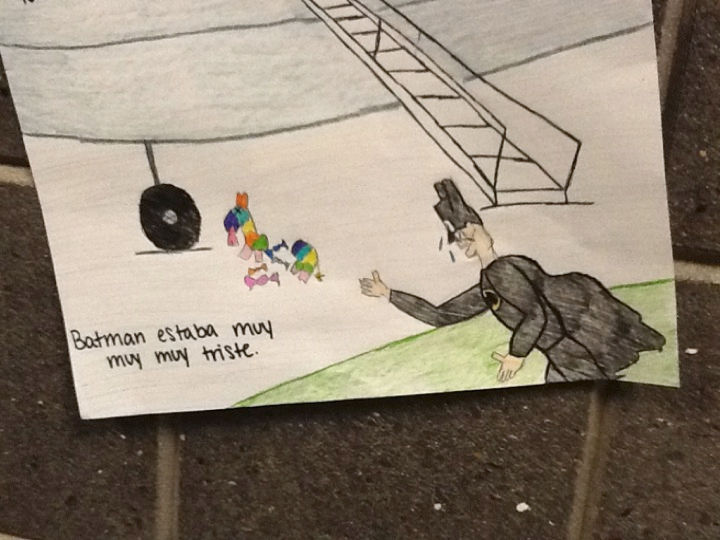Increasing Student Engagement
- Aubrie Lehr
- Sep 13, 2015
- 5 min read
It's that time of year. The fun first-day-of-school activities are over, and the real work has begun. This does not mean, however, that your students can't be engaged in the activities and lessons going on in your classroom.
I have to start this post with a little background information:
During my second year of teaching (2013-14), I was required to do an action research project. If you haven't done an action research project, it's basically finding an area for growth in your classroom/teaching practice, and working on it while keeping data along the way, and writing down what you did to change/better your teaching. I brainstormed for just a couple days on what I wanted to do, finally settling on how to increase student engagement in my class.
In November, I had one of our learning coaches from the district office come in and watch me teach. I had her monitor student engagement every 2 minutes. Basically this means she wrote down who was engaged in the lesson and on-task, and who was not. During that hour, my kids hit 96% engagement for the entire hour. She talked to me after, mentioning there was not much room for an actual "project" because the kids were already engaged. We decided she would come back the next week and watch one of my more difficult classes do a totally different activity. Possibly there could be room for growth in this class. The kids hit 100% engagement.
Now, I have to stop here and say that I am by no means a master teacher. I have bad days. I have terrible days. I have lessons that I start and think to myself, "This was a terrible idea." We do hourly schedules instead of block, so I have them for a short 50 minutes. I've had days where the engagement isn't nearly 100%. But it is my goal to keep it that high, so I wanted to share with you what I found in my project.
After watching me teach the second time, my coach and I decided that maybe I could go back and look at my first year of teaching and see what I had done to bring my kids from 60% engagement (the first time she ever saw me teach in fall of 2012) to 100%. Here is what I found as I went back and looked at my lessons:
1. I posted my objectives for the students to see. You may not think this helps with engagement, but the kids know when the next activity is coming. I don't do anything crazy like we learned in college, I just post a bullet list of things to accomplish that day. If you're lecturing, let the kids know how much longer, and do checks for understanding, or even just checks for listening. A lot of times I say, "Okay, to those of you who may be zoning out, make sure you get this," or, "I know you're tired guys but stick with me for about 3 more minutes and then we're going to play a game."
2. Speaking of the next activity, I have a LOT of activities. It is rare that we do just one or two things in a day. There is a balancing act to this. You can definitely do too much. A good rule of thumb for me is 3-4 activities or 15-20 minute activities and then switch.
3. Games, games, games. I found a gold mine of games here. Praise the Lord for the teacher who put this together, because I do a lot of these games. It says foreign language, but really these can be used in any class. Some teachers are so against games, and I don't know why! The kids learn more from the games than they may ever learn from me standing up there blabbing. There is a little bit of research that goes into why games are so good for learning, which you can see in my project findings at the end of this post.
4. Get in a routine. The kids like to know what's coming. We review vocabulary and usually watch a short current events video on Mondays. We read on Tuesdays together out of our chapter book and work on comprehension questions. We listen to Spanish music on Wednesdays and fill in the blanks of the missing lyrics. We read for a short time on Thursday and then review. Fridays, we speak no English, so we'll do something like making piñatas or building straw towers and trying to balance golf balls on them, all while communicating in Spanish.
5. Get out of your comfort zone! Whether we want to admit it or not, we are actors and actresses. The kids love it when I sing or make a fool of myself in the name of education. I am a HORRIBLE singer. But I sing. (I realize this is not for all teachers and may give some of you ulcers just thinking about it, but just try it just once! I was SO SHY in college and high school!) Sometimes we take a brain break and dance the Chu Chu Ua, a crazy dance in Spanish that has them moving every part of their body. They all pretend to hate it, but everybody is laughing by the end!
6. Tell the kids what they're going to learn and why they need to know it. Spanish is relatively easy to do this with, because, well, Spanish is growing quickly in the US. Kids need to know why they need to know something, even if you just tell them that it's benefiting them cognitively....okay, maybe not that. But come up with a reason for them to learn what they're learning. If it's not in your curriculum and it's not authentic or real-life learning, then maybe be a dare devil and throw it out.
7. Give the kids choices. Not everyone wants to participate in a game all the time. Not everyone wants to do a worksheet. Sometimes I'll give them the option of the worksheet (which I would have gladly chosen in high school) or a game, as long as they have the same outcome in what's being learned/practiced. After a new activity, also remember to ask them what they learned and if they enjoyed the activity. If they hated it, sometimes I'll just throw it out and make a note to do something different next year.
Okay. That was long. And maybe not that engaging. But I hope that now you have a few ideas for your classroom to get your kids pumped up to learn. Click here to see my project Prezi with some videos and other things you may find helpful. There are game ideas and other engagement ideas so make sure you check it out. It's a couple years old, so the information may not be up-to-date totally, but it still may be useful.
:)

Have students write stories about things/people they're interested in instead of setting one requirement for the entire class.

Using Spanish to untangle the human knot. This wasn't as successful as I wanted it to be, but the kids were using Spanish!

Making piñatas on No English Day. Sometimes the most engaging things are the messiest :)

Building straw towers on No English Day. The object was to get a golf ball to balance on top without the tower falling.

Spanish II trying authentic foods they made themselves.

Vocabulary review. Give the definition/English word. 5 seconds to discuss with your team, then race down to write the answer on the board.
Comments